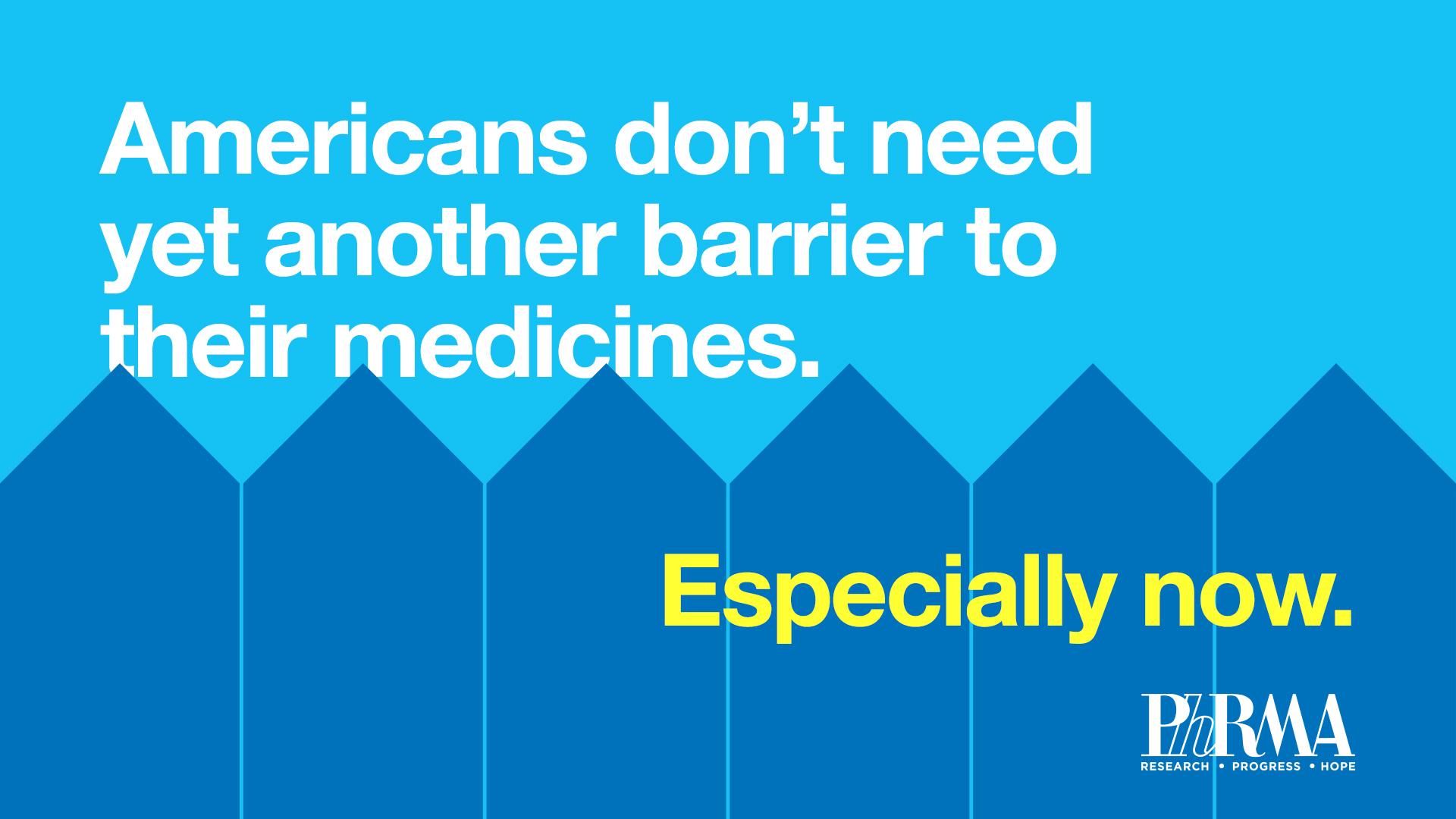| | | | | | | Presented By PhRMA | | | | Vitals | | By Caitlin Owens ·May 14, 2021 | | Good morning. This is, somehow, the last edition of Vitals you'll get from me before I hand over the keys to Tina! Of course, I'll still fill in for her from time to time, and you'll see my name show up in the newsletter all the time. - I had no idea at all what I was in for — covering a global pandemic — when I took over the newsletter back in April 2019.
- I'll be honest, parts of it were awful, and I'm sure there were many days this newsletter was a real downer to read. But I am confident I'll look back at covering the pandemic via this newsletter as one of the most important things I've ever done, and it's been an honor to get to do such meaningful work.
- When I took over, Sam told me the best part of Vitals was the readers, and y'all have proved him right. Thank you for all the kind notes, smart feedback and great tips. Keep in touch! My email isn't changing — caitlin@axios.com.
Today's word count is a beefy 1,409, or a 5-minute read. | | | | | | 1 big thing: New mask guidance tests risk tolerance |  | | | Illustration: Aïda Amer/Axios | | | | The CDC announced Thursday that fully vaccinated people no longer need to wear masks indoors, Axios' Marisa Fernandez reports. Why it matters: The U.S. is entering a new stage in the pandemic where the public — vaccinated or not — will need to assess its own risk tolerance in shared spaces. The big picture: Despite emerging evidence that vaccinated people are less likely to transmit the virus, the mass inability to validate vaccinations may be enough for some to keep their masks on in crowded or indoor spaces for a while longer. What's happening: Most states have already lifted mandates or are planning to. Grocery stores or restaurants, at least in some regions, will likely still require some mask use until more people are vaccinated. Yes, but: Less mask-wearing by vaccinated government officials and vaccinated people overall could reinforce the message to the hesitant that vaccines will speed the return to normalcy Jennifer Nuzzo, senior scholar at Johns Hopkins, tells Axios. - "People's perception that vaccines change nothing is a hindrance to their willingness to get vaccinated," she said.
The other side: "It's clear that outdoor activity is safe without masks and distancing, but indoor venues still pose risks," the O'Neill Institute for National and Global Health Law and Georgetown University Law Center said in a statement. - "The difference between a supermarket, a restaurant or a gym (where masks aren't required) and an airport (where they are) doesn't make sense and isn't supported by science."
|     | | | | | | 2. Hispanics still waiting for a vaccine |  Data: Kaiser Family Foundation; Chart: Will Chase/Axios Hispanic Americans are more likely than Black or white Americans to say, if unvaccinated, they want to get a shot as soon as possible, per new KFF polling. Why it matters: The disproportionate level of vaccine enthusiasm among those who aren't yet vaccinated suggests that Hispanics may be facing additional access issues. By the numbers: 47% of Hispanic respondents said they've already received at least one dose, compared to 60% of white adults. - But among those who haven't, a third of Hispanics say they want to be vaccinated as soon as possible. Only 16% of white adults and 17% of Black adults say the same.
- Only 17% of Hispanics said they definitely don't plan to get vaccinated, compared to 34% of unvaccinated white respondents.
Between the lines: Unvaccinated Hispanic adults are more likely than white adults to report being concerned about missing work due to vaccine side effects, having to pay out of pocket for the vaccine, or not being able to get the vaccine from a place they trust. - These access-related concerns are even greater among Hispanics who are lower-income, uninsured and potentially undocumented.
The bottom line: Access issues can be addressed by good public policy. And removing access issues for people willing to be vaccinated will be key to this next phase of the U.S. effort. |     | | | | | | 3. Latino mental health crisis grows |  | | | Illustration: Shoshana Gordon/Axios | | | | Latino Americans aren't just struggling to get shots. Over 40% of Latino adults have reported symptoms of depression during the pandemic, in contrast to 25% of white non-Hispanics, the CDC reports. Why it matters: The emotional distress is especially acute for Latinos who had COVID-19, some of them tell Noticias Telemundo. Between the lines: Latinos tend to seek treatment reluctantly, struggling to admit help is needed. - When added to barriers to health care, like lack of insurance or a perception of discrimination from doctors, the ordeal can intensify suicidal thoughts.
- The most prevalent mental health issues are anxiety, depression, PTSD and related substance abuse, according to the Anxiety & Depression Association of America.
By the numbers: A third of Hispanics with a mental health disorder get treatment, per the Department of Health and Human Services, compared to 45% of non-Hispanics in the U.S. - Only 7% of licensed psychologists in the U.S. identify as Latino, according to the American Psychological Association, while even fewer, 5.5% of therapists, are able to provide services in Spanish.
What they're saying: "Within the community there are stereotypes of 'esa persona está loca,' that person is crazy — the stigma that if you are sad or anxious you are weak. Unless we create proper services to combat that and to approach communities of color, these will become lifelong problems for many," physician Ilan Shapiro tells Telemundo's Radar. |     | | | | | | A message from PhRMA | | Americans don't need another barrier to their medicines | | |  | | | | We have to lower what patients pay for their medicines. We also have to make sure they are getting the medicines they need. The challenge: H.R.3 forces a choice between one or the other. There's a way to do both, but H.R.3 isn't it. Get the facts. | | | | | | 4. Missouri governor cans Medicaid expansion | | Last fall, Missouri voters approved expanding Medicaid coverage in their state. But Republican Gov. Mike Parson said Thursday the expansion is dead in the water after the state's General Assembly refused to fund it. State of play: The move to block expansion — estimated to potentially extend coverage to 275,000 additional Missourians — is the latest reminder of how entrenched opposition to the ACA remains in deep-red states, Axios' Tina Reed reports. Details: The expansion in Missouri was supposed to begin July 1. - The expansion would have cost the state $130 million. It would also have come with a $1.4 billion federal match to pay for the program, NBC News reports.
- The state will also leave more incentive money on the table. Billions of dollars were set aside for states' expansion in the federal $1.9 trillion economic stimulus package passed in March, including more than $1 billion for Missouri, according to the Kaiser Family Foundation.
- In a release, Parson cited a 2020 lawsuit that challenged voters' ability to pass Medicaid expansion in a ballot initiative because they lacked a funding source. The Court of Appeals opinion issued in June said the General Assembly retained authority to fund expansion — or not — if it passed, his office said.
What they're saying: "Although I was never in support of MO HealthNet expansion, I always said that I would uphold the ballot amendment if it passed," said Parson. He did request funding for the expansion in his proposed budget. What's next: Expect more lawsuits. - "Governor Parson's announcement today that he intends to ignore the will of Missouri's voters and violate the state constitution makes this a matter for Missouri's courts to resolve," Jonathan Schleifer, executive director of The Fairness Project said in a statement.
|     | | | | | | 5. Misinformation and vaccine trust | | COVID-19 is the first major pandemic in the social media era — offering experts a rare opening to study the relationship between online misinformation and human behavior on a large scale, Axios' Alison Snyder and Sara Fischer report. Why it matters: As misinformation about COVID-19 vaccines runs rampant, researchers are trying to measure how much memes and messages with false information can alter someone's decision to get vaccinated. What's happening: "There is mounting evidence that exposure to certain types of media is associated with hesitancy," says Kayla de la Haye, who studies social networks and their impact on health and disease prevention at the University of Southern California. - Tech platforms are scrambling to deal with vaccine disinformation, but experts argue they may be too late and misinformation is persisting.
Details: In a recent Axios-Ipsos poll, "Americans who either believed misinformation or were unsure whether it was true or false were less likely to get the vaccine than those who knew that it was false," Axios' David Nather reported. - Researchers at Indiana University's Observatory on Social Media found states where a higher percentage of discussions on Twitter included low-credibility sources also tended to have a higher percentage of people who are hesitant to take a vaccine.
Yes, but: It's really hard to connect exposure to misinformation to behaviors, says de la Haye. That's because of "the difficulty of monitoring what an individual gets exposed to online and what they subsequently go and do." Go deeper. |     | | | | | | 6. Young people demand vaccine requirements |  | | | Illustration: Sarah Grillo/Axios | | | | Three-quarters of people 18–29 say vaccination should be required to return to campus or work, according to new Generation Lab/Axios polling, and 37% would refuse to come back unless those conditions are in place. Why it matters: Young workers have put pressure on CEOs to take action on social and political issues and have plenty of capital to exert it on reopening policy, Axios' Neal Rothschild writes. The polling suggests that a "get the shot" ultimatum could be pretty effective. - Among the young people polled who aren't vaccinated, 66% said that if it was required to return to campus or work, they would get the vaccine.
- 15% would try to switch jobs or schools, while 13% would refuse to get the vaccine and still try to work or attend school.
- 2% said they would forge proof.
The big picture: 18–29 year-olds are the least vaccinated adult age group relative to their population size, though they've also been eligible for a shorter period of time. - People 18–29 face less risk of severe infection from COVID-19, compared to older adults.
What they're saying: "I live in a very red area and a lot of people are not getting vaccinated," one respondent said. "So I know if I were to return to campus, and vaccinations were not mandatory that 90% of people would not be vaccinated. So that means our campus would have an outbreak again." |     | | | | | | 7. Dog of the week | | Yuki. Photo: Ellen Murphy Meet Yuki, who has persistently submitted herself for dog of the week over the past few months! (I thought she'd already been chosen, whoops!) - "Yuki is riding out the pandemic with her new owners in Washington Heights. She enjoys spa days, appropriately distanced socializing in the park and doggie chicken breast wraps from Trader Joe's," her mom, Ellen, wrote all the way back in January.
- "She spends her days with her dog mom helping biopharma companies share breaking health care news, and appreciates Axios Vitals quick read format. She's a master at negotiations and looks to spread happiness with wink and a smile."
Yuki winking. Photo: Ellen Murphy |     | | | | | | A message from PhRMA | | Congress: Here's why H.R.3 isn't the solution to lower cost drugs | | | | Americans don't need another barrier to their medicines. We have to lower what patients pay for their medicines. We also have to make sure they are getting the medicines they need. H.R.3 forces a choice between one or the other. There's a way to do both, but H.R.3 isn't it. Get the facts. | | | | | | Axios thanks our partners for supporting our newsletters.
Sponsorship has no influence on editorial content. Axios, 3100 Clarendon Blvd, Suite 1300, Arlington VA 22201 | | | You received this email because you signed up for newsletters from Axios.
Change your preferences or unsubscribe here. | | | Was this email forwarded to you?
Sign up now to get Axios in your inbox. | | | | Follow Axios on social media:    | | | | | |









No comments:
Post a Comment